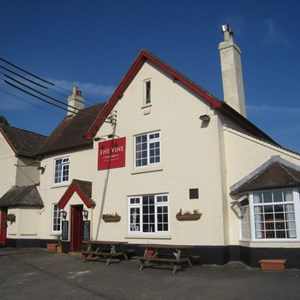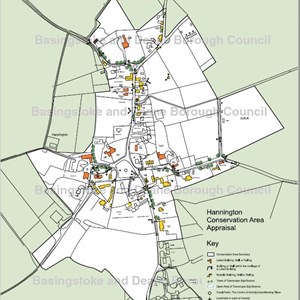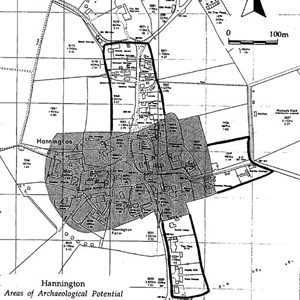Local Places of Interest
Hannington Conservation Area Appraisal & Map
The Hannington Conservation Area was designated in 1992 by Basingstoke and Deane Borough Council in recognition of the special architectural and historic interest of the village.
This document (April 2002) was adopted as Supplementary Planning Guidance by the Basingstoke and Deane Borough Council on 17 July 2003 and complements the policies of the Borough Local Plan (review).
The Hannington Conservation Area Appraisal is accompanied by a Hannington Conservation Area Map.
Other conservation areas in the borough can be found on the Basingstoke and Deane Borough Council website.
Listed Buildings
On the West side of the Village Green is the Grade 1 listed All Saints' Church dating from the 11th century that has a nave and chancel of Saxon origin. Laurence Whistler designed and engraved two modern windows in the church, one on the south aisle dedicated to local farmer William Whistler and another on the south side of the chancel in remembrance of Rose Hodson depicting the house she lived in for 22 years. In addition, including those located in Ibworth and North Oakley, there are a variety of 23 buildings listed as Grade II. They are regarded as having significant historical and architectural importance, often viewed by international visitors. See listed buildings in Hannington Parish. Notably, Tan-y-Bryn Cottage is the oldest cruck frame cottage in Hampshire.
Areas of Archaeological Potential
The Hannington Historic Rural Settlement document describes the locality within the hundred Chuteley/Kingsclere area and the archaeological potential. It refers to the Domesday as the primary historic source relating to Hannington. During the time of the Domesday Survey, the Bishop of Winchester held Hannington.
John Pontoise, the Bishop of Winchester, gave the manor to the Prior and Convent of St Swithun in 1284. It then became a part of the manor of Manydown. The convent retained ownership of the village until Henry VIII granted it to the Dean and Chapter of Winchester.
The manor was sold into lay hands by the mid-17th century. The manor of Hannington Lancelevy and the manor of Hannington were the two manors that evolved out of Manydown. It was the latter that became a parish in its own right while the former was within the parish of Kingsclere. The southern boundary of the church marked the divide between the two. Because of this, parts of the village were in Kingsclere Parish.
The place name in 1023 was Hanningtun. Old English for 'farm of Hana', an Old English name meaning 'cock'.



